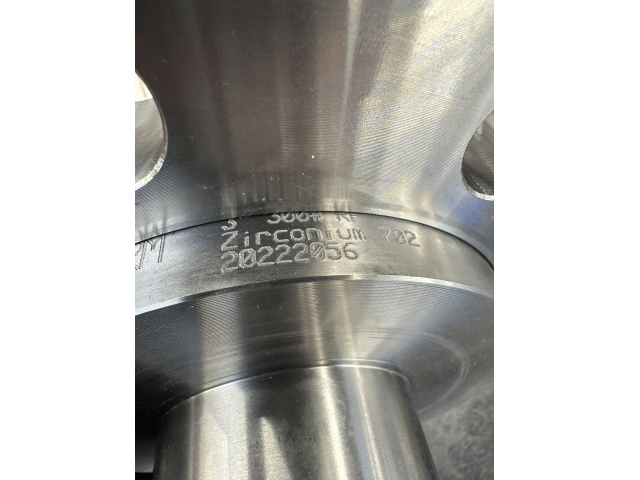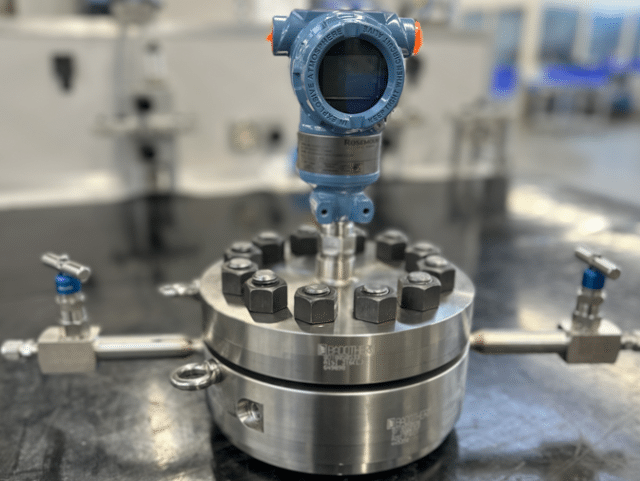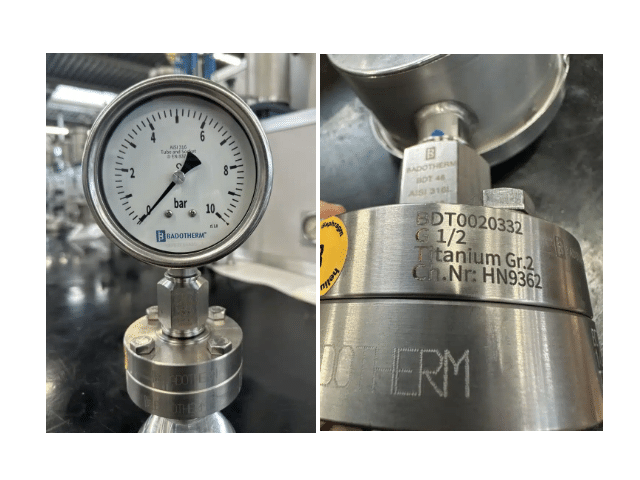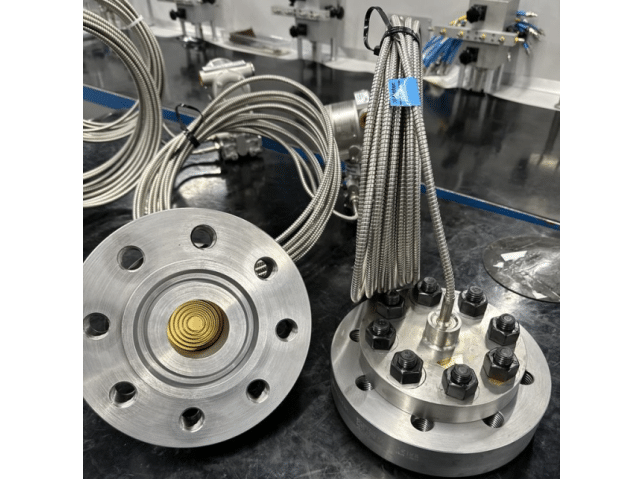These properties make it an ideal material for various industrial applications, including instrumentation. In this blog, we will explore the specific characteristics of Titanium and its exceptional corrosion resistance, highlighting its suitability for different processes.
Titanium is highly corrosion-resistant in several processes due to its stable, protective oxide film. Here are some key processes where its corrosion resistance is particularly advantageous:
- Chemical Processing: Titanium is resistant to a wide range of corrosive chemicals, including nitric and chromic acids, making it ideal for reactors, heat exchangers, and piping systems.
- Marine Environments: Its excellent resistance to seawater and marine atmospheric corrosion makes it suitable for desalination processes and other marine applications.
- Oil & Gas: It withstands aggressive chemicals and saline environments, making it perfect for components exposed to extreme conditions.
- Industrial Gases: Titanium is resistant to attack from moist chlorides, chlorite and hypochlorite solutions, and various gaseous industrial applications.
These properties make Titanium a versatile and reliable material for instrumentation in harsh environments.
NORSOK Compliance
NORSOK, developed by the Norwegian petroleum industry, ensure safety, efficiency, and cost-effectiveness in offshore oil and gas operations. These standards include specific requirements for materials used in harsh environments, such as those found in offshore applications.
For titanium, NORSOK compliance typically involves meeting the requirements of standards like NORSOK M-650 and M-630:
- NORSOK M-650: This standard ensures manufacturers are qualified to handle and process specialist materials, including titanium, for demanding offshore environments.
- NORSOK M-630: This standard provides detailed material data sheets and element data sheets for piping, ensuring the metallurgical requirements for base materials like titanium are met.
The MDS numbers for titanium are found in the NORSOK M-630 standard, which provides detailed material data sheets for piping. For example, the MDS numbers for commercially pure titanium grades might include:
- MDS T-01: For Titanium Grade 1
- MDS T-02: For Titanium Grade 2
These MDS numbers ensure that the materials meet the required specifications for use in offshore and other demanding environments. And in general, these standards help ensure that titanium components used in offshore instrumentation and other applications maintain their integrity and performance under challenging conditions.
Pressure gauge BDT20 with US-T diaphragm seal with full wetted parts Titanium
Recently we supplied a very nice configuration being a solid front safety pattern gauges BDT20-S 100mm with full 316SS wetted parts including the casing. The pressure gauges is protected by means of an special internal pulsation dampener, BDT46, to reduce pressure pulsations to an absolute minimum, ensuring a very long lifetime of these instruments. The diaphragm seals systems consists of the US-T diaphragm seal, that allows a threaded process connection in the lower part, converting to a larger diaphragm upper part. But upper and lower part consist of titanium grade 2 materials and the diaphragm consists of grade 1, which has better formability for the convolution of the diaphragm. Look specifically at the thread in the lower part, that is machined from solid bar material, so NO threaded connections, to avoid any chance of leakage.
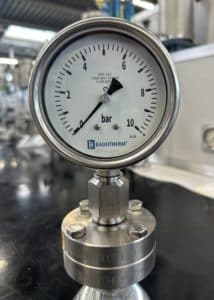
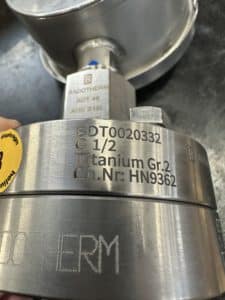
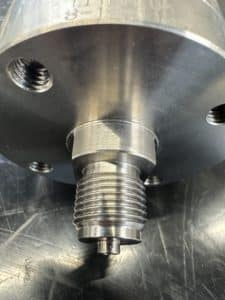
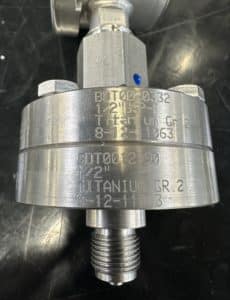
Pressure gauge BDT20 with ECB diaphragm seal with full wetted parts Titanium
For an end user in the oil & gas industry, we recently supplied a very nice solution with a full stainless steel pressure gauge (BDT20) with overpressure protector (BDT49) and an ECB diaphragm seal with full wetted parts in material. The specific of this diaphragm seal design is in the welding of the upper and lower part. Welding of titanium materials is extremely delicate and complex due to several unique challenges associated with the material:
- High Reactivity: Titanium is highly reactive at elevated temperatures. It can easily absorb gases like oxygen, nitrogen, and hydrogen from the atmosphere, leading to the formation of brittle compounds that weaken the weld.
- Contamination Sensitivity: Even minor contamination from oils, dirt, or moisture can significantly reduce weld quality. Therefore, maintaining a clean workspace and using proper shielding gas (like high-purity argon) is crucial.
- Low Thermal Conductivity: Titanium’s poor thermal conductivity causes heat to concentrate in the weld area, increasing the risk of overheating, warping, and residual stress in welded joints.
- Oxidation: At high temperatures, titanium forms an oxide layer that can interfere with the welding process. Proper shielding and post-weld protection are necessary to prevent oxidation.
- Specialized Techniques and Equipment: Welding titanium often requires advanced techniques like Gas Tungsten Arc Welding (GTAW or TIG) and specialized equipment to control heat input and prevent contamination.
These factors make welding titanium a demanding process that requires precision, skill, and careful preparation to achieve high-quality welds.
But look how nicely the seam weld is done, which also has been extensively NDE tested.
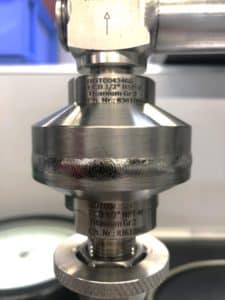
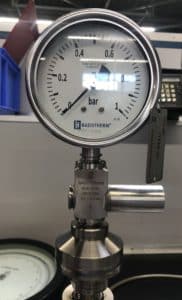
Accessories in titanium such as instrument needle valve or flush rings
Also Badotherm instrument needle valves and manifolds can be provided with titanium Grade 2 material. Not only the body, but specifically the wetted parts of the spindle and it’s type make it quite unique. Here a nice example of a BDTV910. This can be used in combination with a flush ring or flush flange or in combination with a diaphragm seal lower part of the US(L) series.
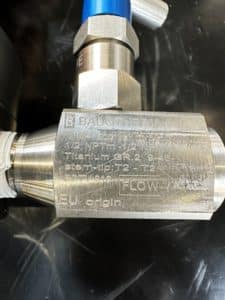
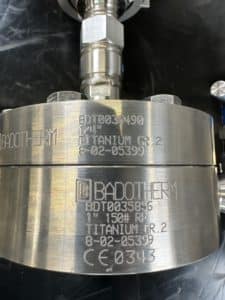
More information:
Datasheet: EC seal – internal diaphragm threaded type
Datasheet: US-T type seal – internal diaphragm threaded type
Datasheet: BDT18-SB – Process pressure gauge 100 & 160mm
Datasheet: BDT20 – Safety process pressure gauge 100 & 160mm
Datasheet: BDT49 overpressure protector
Blog: FSO-EXT UREA in Titanium
